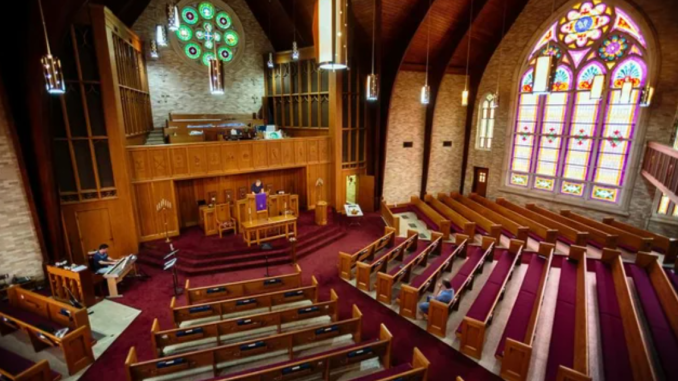
Christians in the US may become a minority group by 2070 if recent trends continue, according to data released by the Pew Research Center.
To predict how the US religious landscape will change over the next 50 years, the center posed several questions: “What if Christians keep leaving religion at the same rate observed in recent years? What if the pace of religious switching continues to accelerate? What if switching were to stop, but other demographic trends – such as migration, births and deaths – were to continue at current rates?”
The center modeled four hypothetical scenarios, based on trends including no switching, steady switching, rising disaffiliation with limits and rising disaffiliation without limits.
The scenario of no switching hypothesizes that Christians will keep their majority through 2070. But in that scenario the center predicts the share of Christians will still decrease by 10 percentage points over the next 50 years, “primarily as a result of Christians being older than other groups, on average, and the unaffiliated being younger, with a larger share of their population of childbearing age”.
The steady switching scenario predicts that Christians will lose their majority but will still be the biggest US religious group in 2070.
“If switching among young Americans continued at recent rates, Christians would decline as a share of the population by a few percentage points per decade”, the center said.
“In 2070, 46% of Americans would identify as Christian, making Christianity a plurality – the most common religious identity – but no longer a majority … the share of ‘nones’ [individuals who are not religiously affiliated] would not climb above 41%”.
The rising disaffiliation with limits scenario will see “nones” become the largest group in 2070 but not a majority, assuming “brakes are applied” to keep retention among Christians from decreasing below 50%.
“If the pace of switching before the age of 30 were to speed up initially but then hold steady, Christians would lose their majority status by 2050, when they would be 47% of the US population (versus 42% for the unaffiliated),” Pew said.
Last, for the scenario of rising disaffiliation without limits, Christians would no longer be a majority by 2045, assuming that switching rates before 30 were to accelerate. As a result, by 2055, the unaffiliated would become the country’s largest group at 46%, ahead of Christians at 43%.
Depending on whether religious switching stops entirely, accelerates or continues at current rates, projections reveal that Christians of all ages will shrink from representing 64% of Americans to between 54% and 35% by 2070. Meanwhile, “nones” will rise from 30% to somewhere between 34% and 52% of the population.
“While the scenarios in this report vary in the extent of religious disaffiliation they project,” the center said, “they all show Christians continuing to shrink as a share of the US population, even under the counterfactual assumption that all switching came to a complete stop in 2020. At the same time, the unaffiliated are projected to grow under all four scenarios.”
In each of the scenarios, non-Christian believers will grow twice in size, to represent 12% to 13% of the US population.
* Article from: The Guardian


